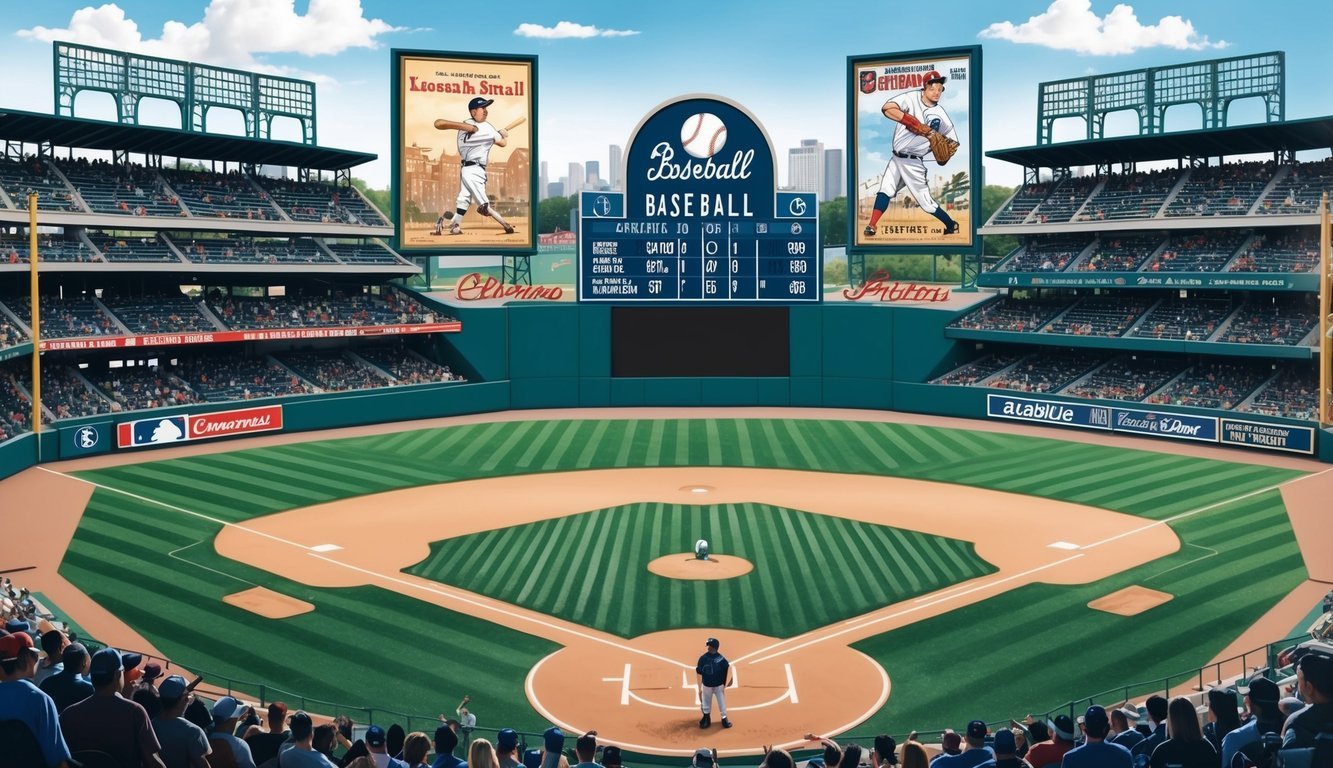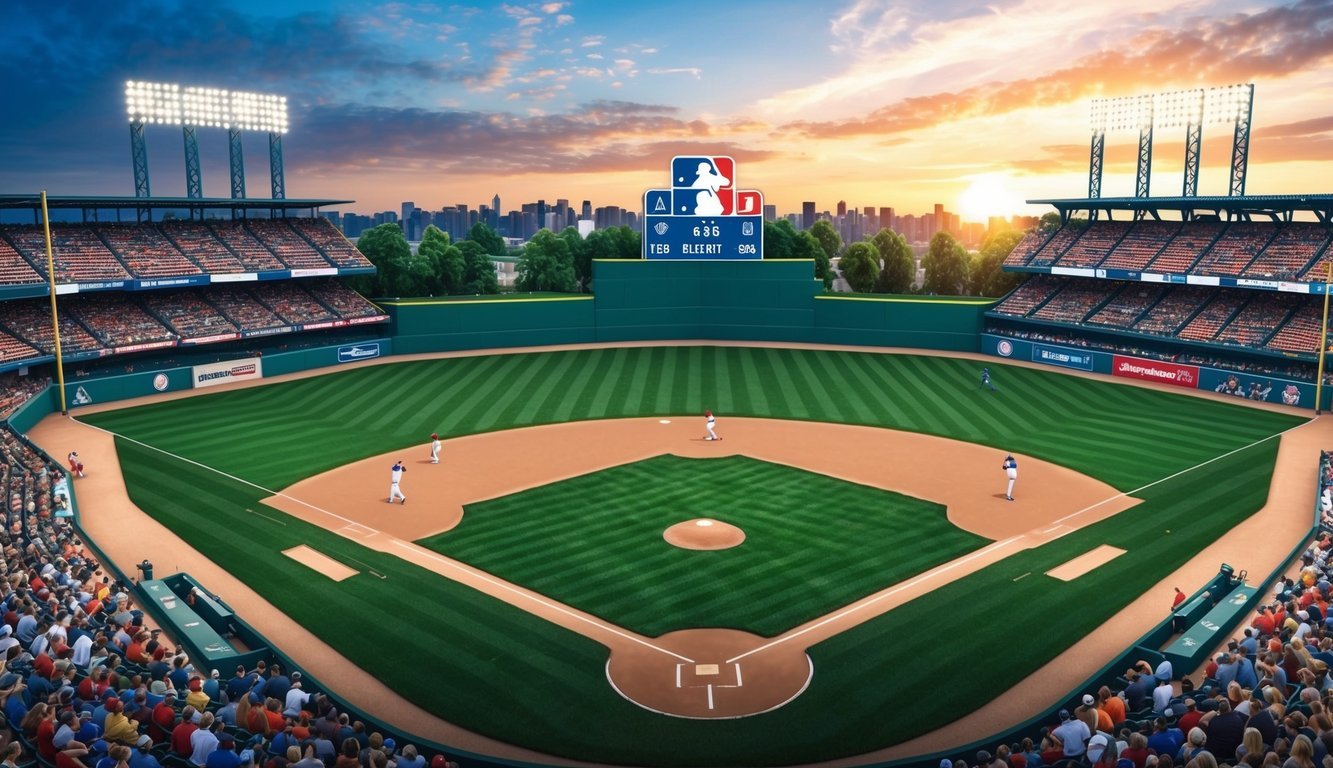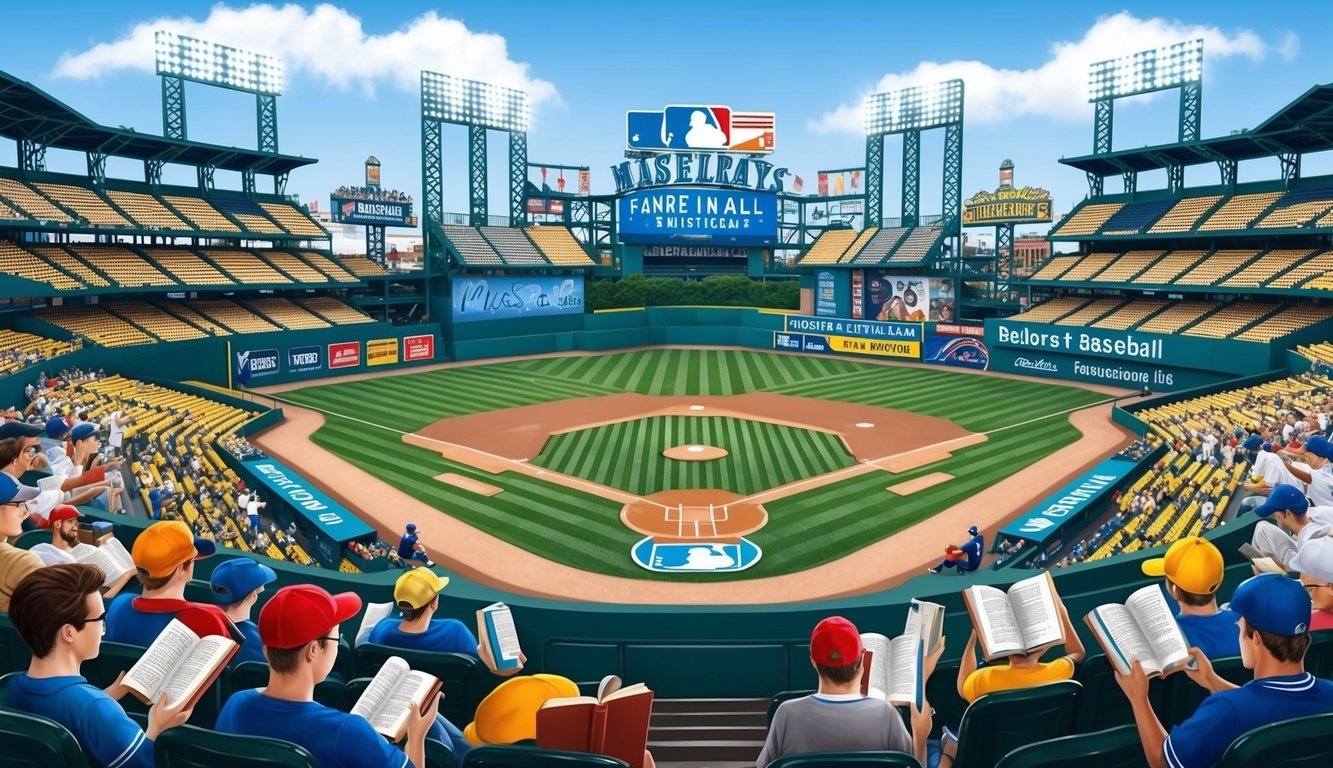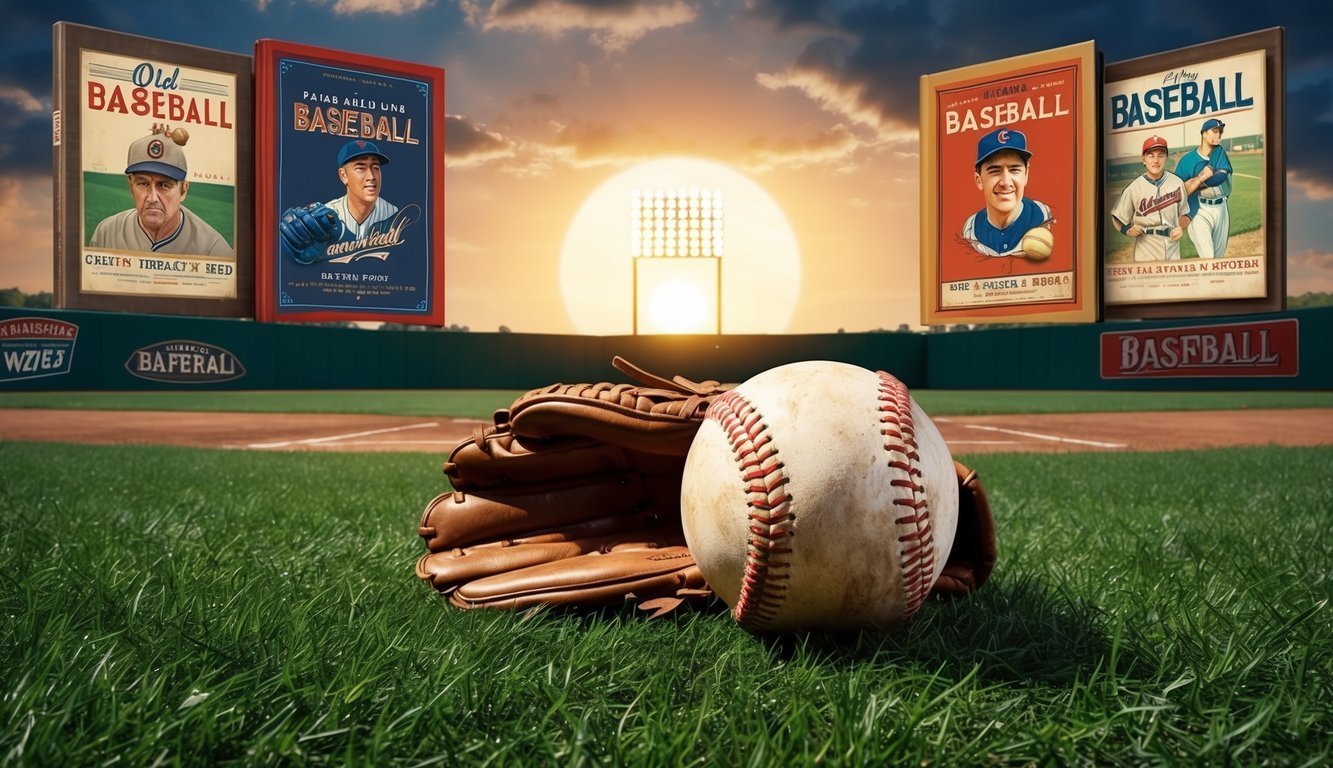Baseball has woven itself into the fabric of American culture, not just as a sport, but as a rich source of inspiration for storytellers.
Movies and literature have captured the essence of the game, transforming it into a powerful metaphor for the American experience. From iconic films like “The Natural” and “Field of Dreams” to classic novels such as “The Great American Novel” by Philip Roth, baseball narratives have explored themes of dreams, redemption, and the human spirit.
These stories resonate with audiences far beyond the baseball diamond.
They tap into universal emotions and experiences, using the game as a backdrop to explore deeper truths about life, love, and the pursuit of happiness.
The crack of the bat, the roar of the crowd, and the tension of a close game provide a familiar setting for tales of triumph and heartbreak.
Baseball’s influence on American literature and film has created a unique cultural legacy.
It has given rise to a pantheon of fictional heroes and villains, unforgettable moments, and quotable lines that have become part of the national lexicon.
This blend of sport and storytelling continues to captivate new generations, ensuring baseball’s place as more than just a game, but a vital part of America’s cultural identity.
Historical Significance of Baseball in America

Baseball has played a pivotal role in shaping American culture and society since the 19th century.
From its humble beginnings to becoming a national pastime, the sport has reflected and influenced key moments in U. S. history.
As communities rallied around their local teams, baseball emerged as a source of pride and unity, transcending social and racial barriers. Baseball’s golden age highlights significant milestones, such as the breaking of the color barrier by Jackie Robinson and the rise of legendary players whose stories captivated the nation.
Through triumphs and tribulations, the sport has continued to mirror the evolving American identity.
Origins and Growth of the National Pastime
Baseball’s roots trace back to the 1830s, evolving from earlier bat-and-ball games.
By the 1850s, it had gained popularity in New York City and surrounding areas.
The first professional team, the Cincinnati Red Stockings, formed in 1869.
The National League was established in 1876, followed by the American League in 1901.
These two leagues merged to form Major League Baseball in 1903.
Baseball quickly became America’s favorite sport, spreading across the country.
It represented the American dream, where anyone could succeed through hard work and talent.
Legendary players like Babe Ruth and Lou Gehrig emerged as national icons in the 1920s and 1930s, further cementing baseball’s place in American culture.
Baseball During World War II and Its Societal Impacts
World War II had a significant impact on baseball.
Many players, including stars like Ted Williams and Joe DiMaggio, left to serve in the military.
Despite wartime challenges, baseball continued.
President Franklin D. Roosevelt encouraged its continuation in his “Green Light Letter,” believing it would boost morale.
The All-American Girls Professional Baseball League was formed in 1943 to fill the void left by male players.
This league, immortalized in the film “A League of Their Own,” promoted women’s participation in sports.
Baseball served as a unifying force during the war, providing entertainment and a sense of normalcy for Americans on the home front.
Racial Integration: The Story of Jackie Robinson
Jackie Robinson’s entry into Major League Baseball in 1947 marked a turning point in American history.
As the first African American player in the modern era, Robinson broke the color barrier in professional sports.
Robinson faced intense discrimination and hostility but persevered with grace and skill.
His success paved the way for other Black players and contributed to the broader Civil Rights movement.
The integration of baseball preceded many other areas of American society, including the U.S. military and public schools.
It symbolized progress and challenged racial prejudices across the nation.
Robinson’s courage and talent inspired future generations of players and helped dismantle racial barriers in other aspects of American life.
Baseball Movies: Reflecting and Shaping Culture

Baseball movies have profoundly impacted American culture, exploring themes of nostalgia, identity, and the human spirit.
These films often serve as a mirror to society, reflecting cultural values while simultaneously shaping perceptions of the national pastime.
The Cultural Phenomenon of ‘A League of Their Own’
‘A League of Their Own’ brought the overlooked history of women’s baseball to the forefront.
The film highlighted the All-American Girls Professional Baseball League during World War II.
It tackled gender roles and societal expectations, showcasing women’s strength and resilience.
The movie’s impact extended beyond the silver screen.
It sparked renewed interest in women’s sports history and inspired a generation of female athletes.
The iconic line “There’s no crying in baseball!” became part of popular culture, encapsulating the film’s blend of humor and poignant commentary.
‘A League of Their Own’ also touched on issues of race and class, providing a nuanced portrayal of 1940s America.
Its enduring popularity speaks to its relevance in addressing ongoing discussions about gender equality in sports.
‘Field of Dreams’ – Baseball as Metaphor
‘Field of Dreams’ uses baseball as a powerful metaphor for faith, family, and the American dream.
The film’s famous line, “If you build it, he will come,” has transcended baseball to become a cultural touchstone for pursuing one’s passions against all odds.
The movie taps into a deep vein of nostalgia, connecting generations through shared love of the game.
It explores themes of redemption and second chances, resonating with audiences far beyond baseball fans.
‘Field of Dreams’ also examines the complex relationship between fathers and sons, using baseball as a bridge across time.
Its blend of magical realism and heartfelt drama has cemented its place in American cinema, inspiring pilgrimages to the real-life field in Iowa.
Underdog Narratives and ‘The Natural’
‘The Natural’ exemplifies the classic underdog story in baseball cinema.
Based on Bernard Malamud’s novel, the film follows Roy Hobbs’ journey from promising young talent to middle-aged rookie sensation.
The movie taps into the mythic qualities of baseball, blending realism with elements of folklore and legend.
Its iconic scenes, like the climactic home run that shatters the stadium lights, have become part of baseball lore.
‘The Natural’ explores themes of redemption, integrity, and the price of fame.
It portrays baseball as a metaphor for life’s struggles and triumphs, resonating with audiences through its timeless narrative of perseverance and second chances.
Influence of Literature on Baseball’s Legend and Mythos

Baseball’s mythology has been profoundly shaped by literature.
Authors have woven the sport into America’s cultural fabric through novels, short stories, and biographies that capture its essence and ideals.
The Great American Novel and Bernard Malamud
Bernard Malamud’s “The Natural” stands as a cornerstone of baseball literature.
Published in 1952, it blends realism with mythical elements, creating an enduring narrative of talent, ambition, and redemption.
The novel’s protagonist, Roy Hobbs, embodies the archetypal baseball hero.
Malamud’s work inspired other authors to explore baseball as a metaphor for the American experience.
Philip Roth’s “The Great American Novel” uses the sport to satirize American culture and history.
These novels elevated baseball from mere game to a symbol of national identity.
‘Shoeless Joe’ and the Works of W.P. Kinsella
W.P. Kinsella’s “Shoeless Joe” revolutionized baseball fiction.
The novel, which inspired the film “Field of Dreams,” blends fantasy and reality.
It explores themes of redemption, father-son relationships, and the enduring power of the game.
Kinsella’s other works, like “The Iowa Baseball Confederacy,” further cemented baseball’s place in magical realism.
His stories often portray the sport as a conduit for healing and connection, reinforcing its mythical status in American culture.
Sportswriting and Baseball Biographies
Sportswriters and biographers have played a crucial role in building baseball’s legend.
Authors like Roger Kahn and Roger Angell crafted lyrical accounts of the game, its players, and its impact on communities.
Biographies of icons like Babe Ruth and Lou Gehrig brought their larger-than-life stories to readers.
These works often blended fact with folklore, enhancing the players’ mythical status.
They highlighted not just statistics, but the human drama behind the game.
Such literature has preserved baseball’s oral traditions and created new legends, ensuring the sport’s place in American cultural memory.
Intertwining Baseball, Film, and Literature with American Values
Baseball’s influence extends far beyond the diamond, weaving itself into the fabric of American culture through movies and literature.
These mediums capture the sport’s essence, reflecting core values and ideals that resonate deeply with audiences.
From Nostalgia to Inspiration: Baseball as America’s Pastime
Baseball films and books often evoke a sense of nostalgia, transporting viewers and readers to simpler times. “Field of Dreams” showcases the magical allure of the game, connecting generations through a shared love of baseball.
The novel “The Natural” by Bernard Malamud explores the mythical qualities of the sport, presenting it as a metaphor for the American dream.
These works tap into baseball’s role as America’s pastime, celebrating its traditions and history.
They inspire fans by highlighting the sport’s timeless appeal and its ability to bring people together.
Teamwork and Triumph: Lessons from the Field
Baseball stories frequently emphasize the importance of teamwork and perseverance. “Moneyball” demonstrates how innovative thinking and collaboration can lead to success against overwhelming odds. “A League of Their Own” portrays women breaking barriers and working together during World War II.
These narratives reflect broader American values:
- Hard work
- Determination
- Overcoming adversity
By showcasing triumphs on and off the field, baseball literature and films reinforce these ideals, encouraging readers and viewers to apply them in their own lives.
Unity and Diversity: Baseball’s Power to Unite People
Baseball stories often highlight the sport’s ability to bridge divides and bring communities together. “42” tells the powerful tale of Jackie Robinson breaking the color barrier, promoting racial equality and inclusion. “The Sandlot” celebrates friendship and acceptance among a diverse group of young players.
These works emphasize baseball’s unique capacity to:
- Foster unity
- Celebrate diversity
- Break down social barriers
By portraying characters from various backgrounds coming together through their love of the game, baseball movies and books reflect America’s melting pot identity and promote values of tolerance and mutual respect.
Modern Baseball: Analytics, Innovations, and Beyond
Baseball has undergone a transformation in recent years, embracing data-driven strategies and expanding its global reach.
These changes have not only impacted the game on the field but have also influenced the stories told about America’s pastime.
The Sabermetrics Revolution: ‘Moneyball’ and Its Legacy
The Oakland Athletics and their general manager Billy Beane revolutionized baseball with their data-driven approach in the early 2000s.
This strategy, known as sabermetrics, used advanced statistics to identify undervalued players and make strategic decisions.
The story of the A’s success became the subject of Michael Lewis’s book “Moneyball” and the subsequent film adaptation.
These works popularized the concept of analytics in baseball for a wider audience.
Today, every MLB team employs data analysts to gain a competitive edge.
Teams use advanced metrics to evaluate player performance, inform in-game decisions, and guide player development.
Diversification of Baseball: The Global Expansion
Baseball’s popularity has grown beyond its traditional strongholds.
The sport has seen significant growth in countries like the Dominican Republic, Venezuela, and Japan.
This global expansion has brought new talent and playing styles to MLB.
International players have become stars, enriching the game with their diverse skills and backgrounds.
MLB has responded by hosting games in various countries and investing in international academies.
These efforts have broadened baseball’s appeal and created new storylines for future movies and books.
The Future of Baseball Movies and Literature
As baseball evolves, so do the stories told about it.
Future works may focus on the human side of analytics.
They could explore how players and managers adapt to new technologies and strategies.
The global nature of modern baseball offers rich material for storytellers.
Tales of international players overcoming cultural barriers could become compelling narratives.
Innovations like virtual reality training and wearable tech might inspire science fiction-tinged baseball stories.
These could explore how technology might shape the future of the sport.
